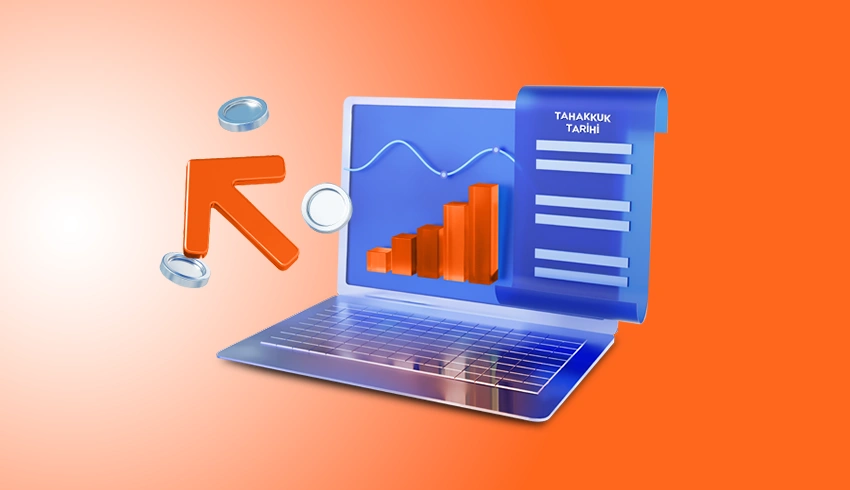The current account deficit defines the net imbalance between a country's imports, services payments and external debt repayments and its exports, tourism revenues and foreign investment revenues. In Turkey's case, the widening of this gap disrupts a financing structure that is compatible with economic growth targets, leading to an increase in credit costs, depletion of foreign exchange reserves and exchange rate fluctuations.
At the corporate level, a widening current account deficit directly increases companies' FX borrowing costs, tightens financing conditions and lengthens the payback period of long-term investment projects. This mechanism makes it imperative for both public and private decision makers to prioritize FX position management, cost optimization and sustainable growth strategies.
What is Current Account Deficit?
A current account deficit is a financing gap in which a country's foreign exchange expenditures (imports, interest payments, transfers) exceed its foreign exchange earnings (exports, tourism, foreign investment). A high current account deficit undermines macroeconomic stability.
This balance item, which includes items such as trade in goods and services, tourism revenues, investment income-expenditure balance and non-refundable transfers, is a critical indicator of macroeconomic health, especially in emerging economies. In the case of Turkey, the fact that it has run a current account deficit for the entire last decade clearly shows how foreign trade performance, exchange rate policies and fluctuations in global markets affect the size of this deficit. Long-term and high current account deficits increase vulnerability to external shocks and may become unsustainable unless measures are taken.
Why does the current account deficit occur?
Current account deficit is an inevitable macroeconomic outcome in any situation where import expenditures exceed export revenues. The main factors underlying this imbalance can be analyzed under the following headings:
Import Dependent Economy: If a country is unable to produce enough intermediate goods or consumer goods required for industrial production and supplies them largely from abroad, the import bill swells. Due to the lack of domestic production, domestic demand is met by external resources and the current account deficit grows.
Energy and Raw Material Imports: Countries that are dependent on foreign sources of energy such as oil and natural gas are forced to import high amounts of energy during periods of rising global energy prices. Energy imports are among the main causes of Turkey's current account deficit. Similarly, the inability to procure the raw materials required for industry domestically also increases imports.
Low Export Revenues: If exports have low value added or focus on limited products and markets, the amount of foreign exchange entering the country remains limited. In particular, economies lagging behind in advanced technology, branding and value-added production cannot generate sufficient export revenues due to their low competitiveness in the international market.
High Domestic Demand and Uncontrolled Growth: During periods of rapid economic growth, when domestic demand exceeds production capacity, imports of consumer goods and investment equipment can explode. If demand for domestic goods turns to imports as a result of uncontrolled credit expansion or high consumption appetite, the current account deficit increases.
High Cost of Production and Lack of Competition: When inflation is high or the local currency remains relatively valuable, the price of domestically produced goods increases. This encourages imports by making imported goods relatively cheaper. Exporters, on the other hand, face difficulties in price competition due to high costs and lose share in foreign markets.
In addition, factors such as external borrowing and profit transfers also affect the current account deficit. If a country borrows from abroad to cover its deficit in goods and services, the interest payments on this debt will put an additional burden on the current account in the future. Similarly, when foreign investors transfer their profits abroad, this creates an outflow of foreign exchange and increases the current account deficit. If a country is unable to sell its goods but has to buy products from abroad, it resorts to borrowing; high levels of external borrowing are also a factor that increases the current account deficit. In short, imbalances between production and consumption and economic structural factors play a decisive role in the formation of the current account deficit.
The Impact of Current Account Deficit on the Economy and Businesses
When the current account deficit shakes macroeconomic balances, its negative effects are reflected in all segments of society. First of all, large current account deficits put pressure on the exchange rate. As the country's foreign exchange deficit increases, the value of the domestic currency tends to fall. As a matter of fact, high levels of current account deficits create financial fragility by destabilizing the economy in the long run. When the local currency depreciates, import costs rise; input costs increase, especially for enterprises that use imported raw materials in production. This puts upward pressure on inflation as it increases product costs. The current account deficit is often associated with high inflation because an insufficient supply of foreign exchange triggers inflation by raising the price of imported goods.
If the economy-wide current account deficit reaches unsustainable levels, the central bank may be forced to raise interest rates or implement tight monetary policies. Rising interest rates increase credit costs for businesses and make access to finance more difficult. SMEs in particular may face cash flow constraints in a high interest rate environment and may be forced to postpone their investments. Exchange rate fluctuations and an environment of financial uncertainty make it difficult for businesses to see the future; long-term planning becomes difficult. When consumer confidence is undermined and inflation is high, domestic demand contracts, which means lower sales and profitability for many sectors. In sum, the negative macro-level effects of the current account deficit directly threaten businesses at the micro level: higher input costs, lower demand and worsening financing conditions can prevent businesses from achieving their growth and profitability targets.
Digital Finance Solutions for Businesses in the Current Account Deficit Environment
In a macroeconomically challenging environment, businesses need to strengthen their financial structures to survive and sustain growth. The most effective micro-strategy against the fluctuations caused by the current account deficit is to keep the cash flow within the company healthy, to control costs and to make financial decisions quickly based on data. This is where digital financial solutions come into play: Digitalization of many financial processes, from payment collection to cash flow management, provides businesses with speed, efficiency and cost advantages. With its expertise in financial technologies, Finrota offers innovative digital finance solutions for all businesses in Turkey, from SMEs to large-scale companies. The main digital solutions offered by Finrota and their benefits to businesses are as follows:
Online Collection Platform
Finrota's online collection platform Netahsilat enables fast and secure online payments from dealers, sub-dealers and customers. With unlimited virtual POS integration, credit card and alternative payment methods support, companies can collect their receivables arising from sales much faster. This accelerates cash flow, reduces the need for external financing and prevents liquidity problems. In addition, since Netahsilat can work integrated with ERP and accounting systems, it automates collection processes, saving labor and minimizing errors.
Review Your Account Transactions on a Single Screen
This solution combines all bank accounts and company credit card transactions on a single screen with its open banking infrastructure. It allows instant monitoring of account balances, income and expense movements in different banks. Thanks to NetEkstre, finance teams can see a consolidated financial status without the need to check internet branches for each bank separately, saving time. Since the daily balance, transfer balance and statement information are monitored on a single panel, companies make healthier financial decisions by clearly monitoring their instant liquidity status.
Report POS Transactions
Posrapor, which reports all sales transactions realized through physical POS devices and virtual POS on a single platform, is especially critical for the retail and distribution sector. It automatically brings together details such as collections made from POS devices of multiple banks, installment plans, commission and value date. In this way, companies can easily track how much commission is deducted from which sales or when payments will be credited to their accounts. With the integration of POS transactions into the ERP/Accounting system, there is no need for manual data entry, reconciliation processes are accelerated and possible financial errors are prevented.
Electronic Direct Debit System
This solution, developed for businesses working with distributors and dealers, makes it possible to manage DBS transactions in different banks from a single point. With the Direct Debit System, dealers automatically pay their debts within the credit limits defined to them, while the supplier company (parent company) receives its collections in a guaranteed manner. Finrota E-DBS enables automatic transmission of invoices through integrated banks and realization of collections on time. In this way, the selling company consolidates its cash flow by collecting its receivables on time and with assurance, and minimizes the financing risk affected by the current account deficit.
Collective Payment System
For companies with a large number of suppliers, employees or dealers, TÖS offers great convenience. With this system, payments such as EFT, wire transfer, SWIFT can be made in bulk at one time. For example, if you are going to make payments to hundreds of suppliers, you can automatically distribute all payments with a single instruction through TÖS instead of making separate transactions for each bank. Thanks to the possibility of simultaneous money transfer to all banks, payments reach the counterparty quickly and delays and late interest are prevented. At the same time, internal control is ensured through approval mechanisms and role-based authorizations. TÖS increases operational efficiency by creating significant time and labor savings in payment processes.
Artificial Intelligence Support in Cash Flow
Finrota's cash flow platform NAP360 is an integrated solution that allows companies to manage their entire cash flow from a single panel. It offers future-oriented cash flow projections with artificial intelligence-supported analysis and forecasting features. For example, by analyzing your past financial data, it predicts the payments and collections you will make in the coming months and shows possible cash shortages in advance. Thanks to the currency entry feature, companies can enter possible changes in exchange rates into the system and simulate their financial statements according to the new exchange rate. This means proactive planning against currency risk, especially for businesses that deal in foreign currency. Thanks to the warnings and alarms provided by NAP360, managers can be notified in advance if a cash deficit will occur on a certain date and take the necessary measures.
The above digital financial solutions help businesses accelerate cash flow, secure receivables and gain financial efficiency. Companies that digitize their financial processes are much better prepared for uncertainties in the economy, such as the current account deficit. For example, a company that collects its receivables on time and manages its payments effectively is less affected by exchange rate fluctuations or interest rate hikes. With these solutions offered by Finrota, businesses can both increase their competitiveness by improving their financial performance and indirectly contribute to the country's fight against the current account deficit. It should not be forgotten that strengthening financial health at the micro level is one of the cornerstones of economic stability at the macro level. By getting acquainted with Finrota's digital finance solutions, you can strengthen the financial course of your business and take a strong stance against the risks arising from the current account deficit.



